Although insect pests don’t require treatment on all soybean acres, there are some common pests we need to scout and manage for on a routine basis. The most serious pests typically infest soybean after pods have begun to develop, and in many cases, the threat of insect infestations are worse in later maturing fields. However, soybeans should be scouted weekly for the presence of insect pests until full seed (R6) plus another 10 days.
Stink bugs are the most common pest found in soybean, particularly of late maturing fields. Although populations are off to a slow start this year, at least some later maturing fields will need treated for stink bugs. There are several species, but the green stink bug is most common in Tennessee. Infestations typically begin building at R4-R5 (mid-podfill). Adults and immature life stages feed on the seed. Treatment is recommended any time after blooming has begun up until R6 (full pod) if the population reaches or exceeds 9 stink bugs per 25 sweeps. It is important to be able to identify the adult and immature life stages. Brown marmorated stink bugs, another invasive pest, may be a significant part of the stink bug complex in the eastern parts of the state. Pyrethroid insecticides are most commonly used to control stink bugs, although acephate is another good option.
Defoliating insects include a complex of species that feed on leaves. This may include bean leaf beetle, Japanese beetle, grasshoppers, blister beetles, and several caterpillar species. Green cloverworm and loopers are the defoliating caterpillars most commonly encountered. Green cloverworm may be present all season long, whereas most serious looper infestations, specifically soybean looper, occur late season and in late maturing soybean fields. Both species are green and may move with a looping, inch-worm fashion. However, they can be distinguished by the number of prolegs (pictured below). Soybean and cabbage loopers have two pair of prolegs. Green cloverworm has three pair of prolegs in the middle of the body.
Treatment is recommended for defoliating insects once blooming has begun until R6 (full pod) when defoliation exceeds 20-25%. Be sure to judge defoliation levels across the entire canopy. Often, you may be treating for a complex of defoliating insects. The insecticides you chose will depend on the species doing to most leaf feeding. Pyrethroid insecticide work relatively well for many of the defoliating species but provide poor control of soybean looper. A comprehensive list of treatment thresholds and insecticide options is available here (link to insecticide recommendations for soybean). It is important to remember than making more than 1 or 2 insecticide applications in soybean is rarely justified in Tennessee, even on late maturing soybean. You are spraying too much if you are routinely spraying soybean fields 3 or 4 times a season.
Kudzu Bugs are an invasive insect that has infested most of the counties in eastern Tennessee and the southern and central counties of middle and west Tennessee. Adults migrate from kudzu to soybean, typically in July. Infestations often occur worst and first in more mature soybean that are flowering at the time of migration. Adults are about the size of a pencil erasure, brownish in color, and some somewhat square in shape. Immature are more round in shape and covered with short hairs. There are some great pictures of this insect at www.kudzubug.org.
Kudzu bugs feed on plant sap, and it takes time and numbers to cause economic damage. Treatment is not recommended on the presence of adults but rather when one or more nymphs are found per sweep with a standard sweep net. The biggest mistake made is treating too soon. Otherwise, one well-time application usually does the trick. Recommended insecticide can be found at the link provided above.
Bean leaf beetles and threecornered alfalfa hoppers are also being reported in high numbers in some fields. Recent data suggests that threecornered alfalfa hoppers are not a serious threat to soybean once plants are 10-12 inches tall, and frankly, I do not recommend treatment once fields have started flowering. Bean leaf beetle defoliation may accumulate over time. I suggest treating in soybean after R1 and until R6 when defoliation exceeds 20-25%. It generally requires two or more bean leaf beetles per sweep to cause this level of defoliation, but treatment may be needed for lower infestation levels if other defoliating pests are present. There are areas of the state where resistance to pyrethroid insecticides may occur in bean leaf beetle populations. This appears more likely in counties along the Mississippi River or bordering Mississippi. In these spots, adding 0.5 lbs of acephate to a pyrethroid insecticide will provide better control.

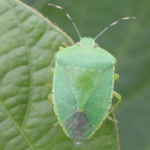
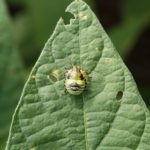
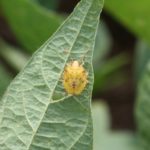
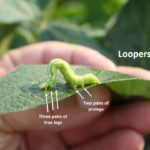
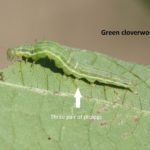
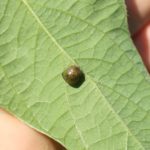
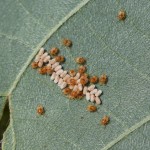
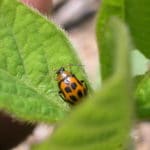
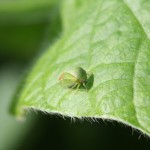

One thought on “Some Soybean Insect Pests – Identification and Management”
Comments are closed.